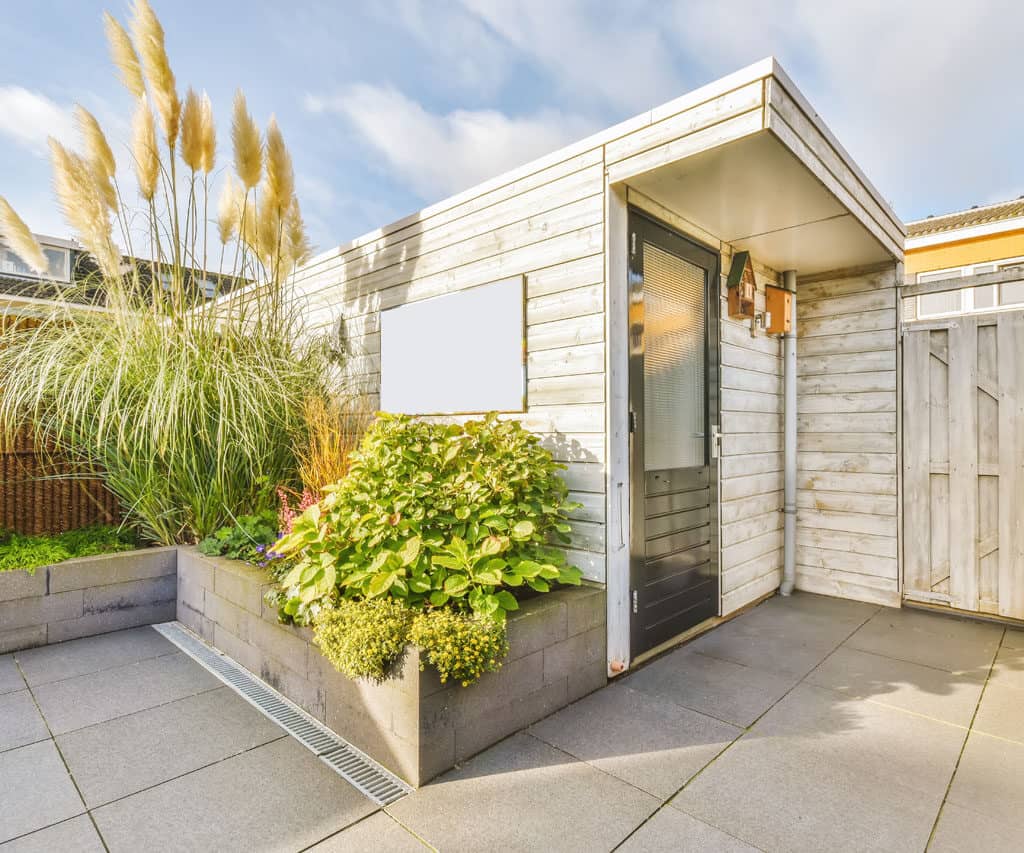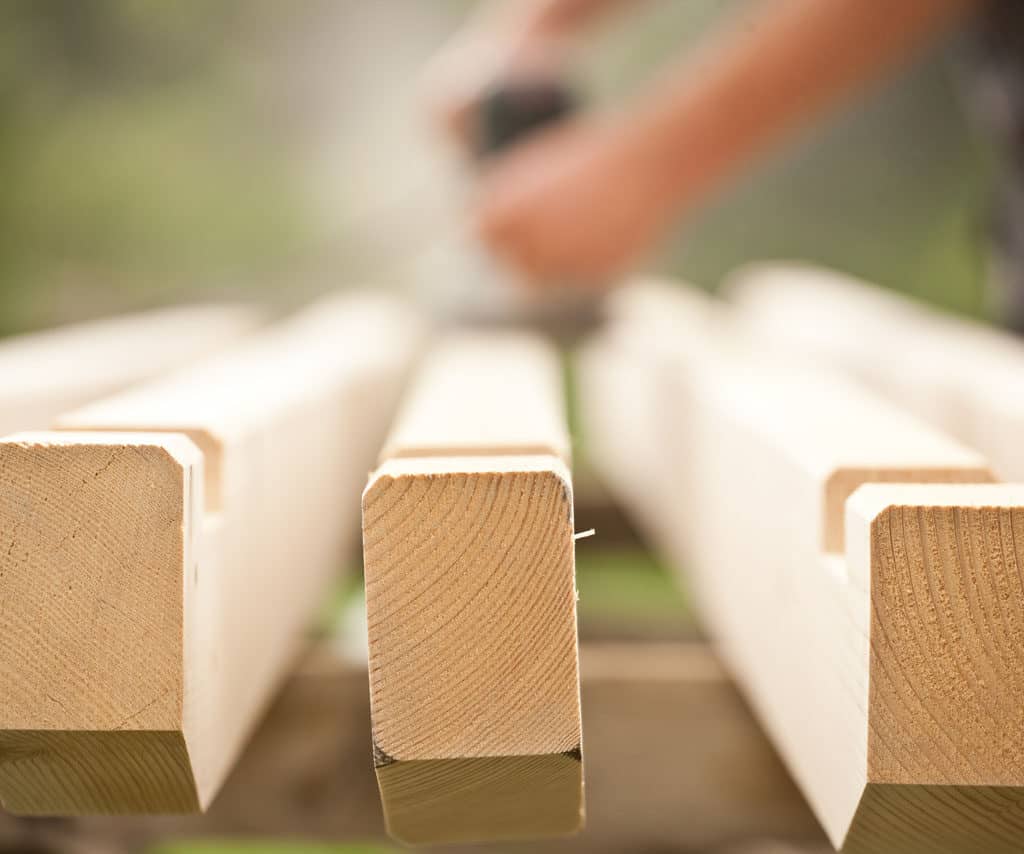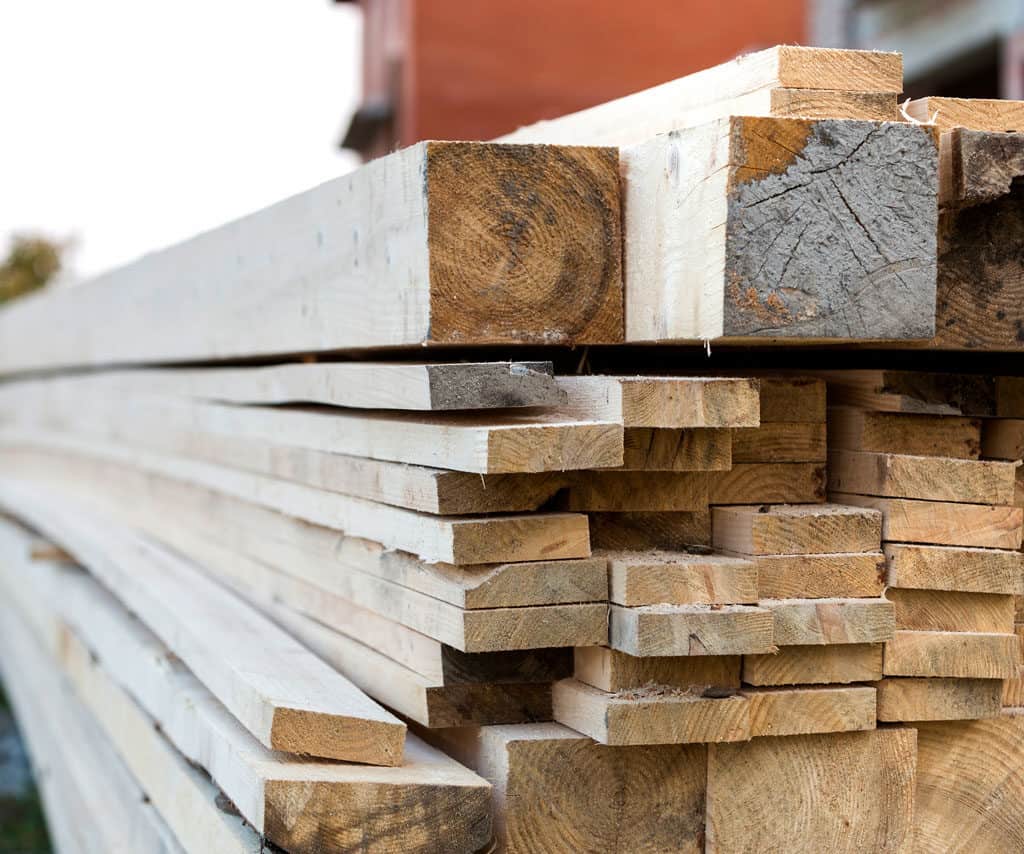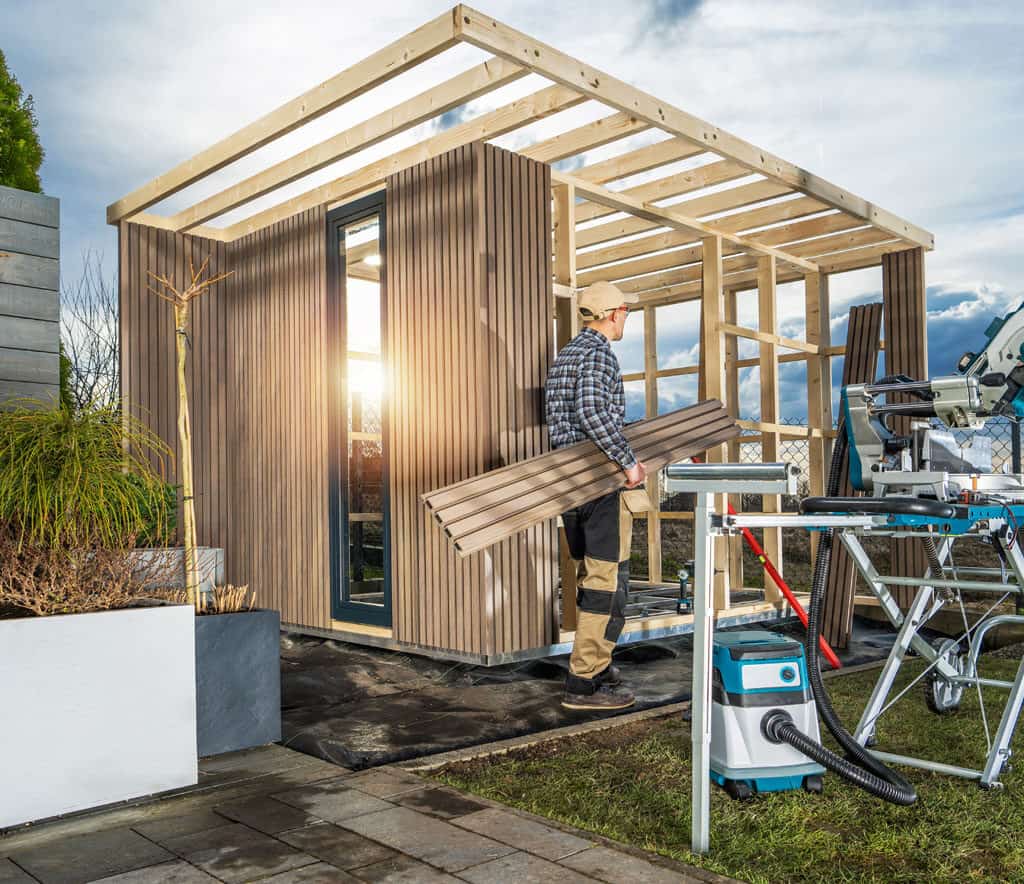Outdoor timber structures are susceptible to the relentless forces of nature, including rain, sun exposure, insects, and fungal decay. To protect your investment and ensure the long-term durability of outdoor wood projects like decks, fences, and garden furniture, it’s crucial to employ effective preservation methods. In this comprehensive guide, we will explore the primary types of treatment for outdoor timber preservation, including chemical treatments, physical processes, and surface coatings.
1. Chemical Treatments:
Pressure Treatment (Tanalisation)
Pressure treatment, often referred to as tanalisation, represents the pinnacle of wood preservation techniques. It is a process that imbues wood with remarkable resistance against decay, insect infestation, and fungal growth, ensuring its longevity in the most challenging outdoor environments.
The Process:
Pressure treatment involves a meticulously controlled process that ensures the deep penetration of wood with specialised wood preservatives. This process occurs in a purpose-built facility equipped with high-pressure chambers and the necessary chemicals. Here’s a step-by-step breakdown of the pressure treatment process:
- Preparation of Wood: The process begins with the selection of timber that meets the required quality and size standards. The wood is carefully inspected for any defects, knots, or other imperfections that could affect the treatment process or the performance of the preserved wood.
- Loading: Once the wood is selected, it is loaded into the treatment chamber. The chamber is sealed to create an airtight environment, which is essential for maintaining precise control over the treatment conditions.
- Initial Vacuum: Before the preservatives are introduced, the chamber is subjected to a vacuum. This vacuum removes air and moisture from the wood’s cellular structure, creating space for the preservatives to infiltrate effectively.
- Pressure Impregnation: With the chamber evacuated, the preservative solution is introduced at a high pressure. Common preservatives used in tanalisation include copper-based compounds like copper azole or copper naphthenate. These chemicals have proven effective against decay and insects.
- Pressure Cycles: The pressure is maintained for a specified duration, allowing the preservatives to permeate the wood thoroughly. Pressure cycles are often employed to ensure that the preservatives reach even the innermost layers of the wood. The combination of pressure and time in the chamber ensures deep penetration, making the wood resistant to external threats.
- Drain and Vent: After the treatment, the excess preservative solution is drained from the chamber, and any residual gases are vented safely. This ensures that the treated wood is safe for handling and use.
- Final Inspection: The preserved wood is subjected to a final inspection to ensure that the treatment process was successful and that the wood meets the desired preservation standards.
Why Pressure Treatment is Preferred:
Pressure treatment, or tanalisation, offers several distinct advantages that make it the preferred choice for outdoor timber epreservation:
- Deep Penetration: Pressure treatment forces preservatives deep into the wood, creating a robust barrier against decay, insects, and fungal growth. This deep penetration ensures that the wood remains protected, even in harsh weather conditions.
- Uniform Treatment: The controlled environment of the treatment chamber ensures uniform distribution of preservatives, eliminating weak spots in the wood. This consistency is crucial for maintaining the wood’s integrity.
- Longevity: Pressure-treated wood can withstand the elements for extended periods, often lasting decades without significant deterioration. This longevity makes it a cost-effective choice for outdoor applications.
- Versatility: Pressure-treated wood can be used in a wide range of outdoor projects, from decking and fencing to structural components and garden furniture. Its versatility makes it a reliable choice for various applications.
- Environmentally Conscious Options: Modern pressure treatment methods often employ environmentally friendly preservatives, reducing the ecological impact while preserving wood effectively.
Pressure treatment, or tanalisation, is a highly advanced wood preservation method that ensures the longevity and durability of outdoor timber. Its intricate process guarantees deep penetration of preservatives, making the wood impervious to decay, insects, and fungal growth. As a result, pressure-treated wood remains a popular choice for demanding outdoor environments, offering a combination of resilience, versatility, and environmental responsibility that is difficult to match with other preservation methods.
For these reasons, Midlands Sheds and Summerhouses work almost exclusively with tanalised timber, ensuring our customers get the very best. But of course, there are many other wood preservation methods around, applicable to both the initial construction and the aftercare of your garden building.

Creosote Treatment
Creosote treatment is a venerable method of preserving wood that has withstood the test of time. This tried-and-true technique involves using creosote, a tar-like substance derived from coal or wood, to safeguard wood against the ravages of moisture, insects, and decay.
The Process:
Creosote treatment is a straightforward yet effective process that harnesses the remarkable properties of creosote to protect wood. Here’s an overview of how creosote treatment is typically carried out:
- Wood Selection: The process begins with the careful selection of wood that meets the treatment criteria. Wood quality, size, and freedom from defects are key considerations.
- Impregnation: The selected wood is loaded into a treatment vessel, often a large cylinder or tank. The vessel is sealed to create an airtight environment.
- Creosote Introduction: Creosote is then introduced into the vessel. It is heated to a liquid state and sprayed or flooded onto the wood. The key to creosote’s effectiveness lies in its ability to form a thick, protective barrier on the wood’s surface.
- Heating: Heat is applied to the vessel to aid the penetration of creosote into the wood. This process ensures that the preservative seeps deep into the wood’s fibres, making it highly resistant to moisture and pests.
- Cooling and Solidification: After adequate impregnation, the wood is cooled, causing the creosote to solidify and adhere to the wood. This creates a durable, water-repellent surface that acts as a protective shield.
- Final Inspection: The treated wood is subjected to a final inspection to ensure that the creosote treatment process has been successful and the wood meets the required preservation standards.
The Legacy of Creosote Treatment:
Creosote treatment has been employed for generations due to its numerous advantages:
- Excellent Preservation: Creosote is renowned for its superior preservation qualities. It forms a robust barrier on the wood’s surface, protecting it from moisture, fungal decay, and insect infestation. This longevity ensures that creosote-treated wood can endure harsh outdoor conditions for extended periods.
- Resistance to Environmental Factors: Creosote-treated wood is highly resistant to the adverse effects of weather, including rain, UV radiation, and temperature fluctuations. This makes it suitable for outdoor applications that face constant exposure to the elements.
- Versatility: Creosote-treated wood finds use in a wide range of outdoor projects, including railway ties, utility poles, and marine structures. Its adaptability to different environments makes it a reliable choice for various outdoor applications.
- Proven Track Record: Creosote treatment has a long history of success, with treated wood structures often lasting several decades. Its durability and reliability have contributed to its continued use in critical infrastructure projects.
- Low Maintenance: Once treated, creosote-treated wood requires minimal maintenance. It does not require frequent reapplication or sealing, making it a cost-effective choice in the long run.
Creosote treatment is a time-honoured method of wood preservation that has maintained its relevance over the years. Its straightforward yet effective process ensures that wood remains resilient against moisture, decay, and insect threats. While environmental concerns have led to the reduced use of creosote in residential applications, it remains a trusted choice for critical outdoor structures and infrastructure projects where longevity and dependability are paramount. Creosote treatment stands as a testament to the enduring power of traditional wood preservation methods.

Copper-based Preservatives
Copper-based preservatives have emerged as a reliable and environmentally conscious method for preserving wood. These preservatives, such as copper azole and copper naphthenate, are highly effective in protecting wood from decay and deterring insect infestations.
Composition:
Copper-based wood preservatives harness the potent properties of copper to shield wood from environmental threats. Two commonly used copper-based preservatives are:
- Copper Azole: Copper Azole is a copper-based wood preservative that combines copper with an organic compound. This combination enhances the preservative’s effectiveness while reducing the ecological impact. Copper azole is often used in residential applications where environmental concerns are a priority.
- Copper Naphthenate: Copper Naphthenate is another trusted option in the world of copper-based preservatives. It is known for its exceptional ability to protect wood against fungi and termites. Copper naphthenate is used in a variety of outdoor applications, from fences and decking to utility poles and marine structures.
The Process:
Copper-based wood preservation involves a carefully controlled process to ensure the even distribution of preservatives within the wood. Here’s an overview of how copper-based preservatives are typically applied:
- Wood Selection: The process begins with the selection of suitable wood that meets the treatment criteria. Wood quality, size, and freedom from defects are key considerations.
- Treatment Solution Preparation: The copper-based preservative is mixed with water to create a treatment solution. The concentration of copper in the solution is determined by the specific wood preservation requirements.
- Immersion or Pressure Treatment: There are two common methods for applying copper-based preservatives:
a. Immersion: In this method, the wood is fully immersed in the treatment solution, allowing the preservative to penetrate deeply into the wood’s fibres. Immersion is typically used for smaller or individual pieces of wood.
b. Pressure Treatment: For larger timber or wood used in critical outdoor applications, pressure treatment is employed. This method involves placing the wood in a treatment chamber and subjecting it to pressure to ensure the preservative solution is forced deep into the wood’s structure.
- Drying and Curing: After treatment, the wood is carefully dried and cured to ensure that the preservative sets effectively. Proper drying is crucial to prevent leaching of the preservative after installation.
- Final Inspection: The treated wood undergoes a final inspection to ensure that the copper-based preservative has been applied successfully and that the wood meets the required preservation standards.
Advantages of Copper-based Preservatives:
Copper-based wood preservatives offer several advantages that make them a preferred choice for outdoor timber protection:
- Excellent Decay Resistance: Copper is a potent fungicide, making copper-based preservatives highly effective at preventing wood decay. This protection ensures that treated wood remains durable and long-lasting.
- Termite Deterrence: Copper-based preservatives are known for their ability to deter termite infestations. This is especially crucial in regions where termites pose a significant threat to wood structures.
- Environmental Friendliness: Modern copper-based preservatives, such as copper azole, are designed to be environmentally friendly, with reduced environmental impact compared to some older preservatives. They are often chosen for residential applications due to their eco-conscious properties.
- Versatility: Copper-based preservatives can be used in a wide range of outdoor projects, from residential decking and fencing to utility poles and marine applications. Their versatility and effectiveness make them a reliable choice for various outdoor environments.
- Low Maintenance: Once treated, copper-based preservative-treated wood requires minimal maintenance. It does not require frequent reapplication, making it a cost-effective option over the long term.
Copper-based preservatives, such as copper azole and copper naphthenate, represent a powerful method for preserving wood. Their composition, application process, and exceptional protective qualities make them well-suited for outdoor timber protection. Whether it’s safeguarding residential structures or critical outdoor infrastructure, copper-based wood preservation is another popular choice for ensuring the longevity and integrity of wood in demanding outdoor environments.

2. Physical Treatments:
Kiln Drying
Kiln drying is a precise and controlled process that plays a pivotal role in enhancing the durability and stability of wood for outdoor applications. This method is essential for reducing moisture content within the wood, making it less susceptible to decay, warping, cracking, and shrinkage.
The Process:
Kiln drying is a meticulously controlled process that removes moisture from the wood to achieve the desired moisture content for outdoor use. Here’s a detailed overview of how kiln drying is typically carried out:
- Wood Selection: The process begins with the careful selection of wood that meets the required quality standards. Wood species, size, and initial moisture content are taken into consideration.
- Loading: The selected wood is loaded into specially designed kilns, which are essentially large chambers or ovens. The kilns are equipped with heating elements and ventilation systems.
- Heating: Heat is applied to the kiln, raising the temperature within the chamber. The heat accelerates the evaporation of moisture within the wood.
- Humidity Control: Simultaneously, the kiln’s ventilation system draws out the moist air, maintaining controlled humidity levels within the chamber. This humidity control prevents the wood from drying too quickly, which could lead to cracking or other defects.
- Drying Cycles: Kiln drying involves multiple drying cycles, with temperature and humidity levels adjusted during each cycle. These cycles are carefully monitored to ensure gradual moisture removal while minimising stress on the wood.
- Moisture Content Measurement: Throughout the drying process, wood moisture content is regularly measured using moisture meters. This ensures that the wood reaches the desired moisture content for its intended use.
- Cooling and Equalisation: After reaching the target moisture content, the wood is gradually cooled to room temperature. This cooling phase helps to equalise the moisture distribution within the wood, reducing the risk of post-drying defects.
- Final Inspection: The kiln-dried wood undergoes a final inspection to ensure that it has reached the required moisture content and that it meets the quality standards for outdoor use.
Benefits of Kiln Drying:
Kiln drying offers several advantages that make it a preferred method for outdoor timber preservation:
- Moisture Reduction: Kiln drying significantly reduces the moisture content of wood, making it less prone to decay, fungal growth, and insect infestation. This is crucial for outdoor applications where exposure to moisture is constant.
- Dimensional Stability: Kiln-dried wood experiences reduced warping, twisting, and shrinking. This results in greater dimensional stability, ensuring that wood components remain true to their intended shape and size over time.
- Minimised Cracking: Kiln drying minimises the risk of surface and internal cracking, which can compromise the structural integrity of wood in outdoor environments.
- Enhanced Strength: Kiln drying can increase the strength of wood, making it better suited for load-bearing applications and outdoor structures that need to withstand heavy use.
- Reduced Weight: The removal of moisture through kiln drying reduces the weight of the wood, making it easier to handle during construction and transportation.
- Efficient Processing: Kiln drying allows for efficient and controlled processing of wood, resulting in consistently dried wood products that meet the required standards.
Kiln drying is a vital step in the preservation of wood for outdoor applications. Its controlled and precise nature ensures that wood is dried to the desired moisture content, making it resilient against decay, warping, and other environmental stressors. Kiln-dried wood is not only more durable but also more stable, ensuring that outdoor timber structures remain strong and reliable for years to come. Its significance in outdoor timber preservation cannot be overstated, making it an indispensable part of the wood processing industry.

3. Surface Coatings:
Paint
Surface coatings, particularly paint, offer an effective means of preserving outdoor timber by providing both aesthetic appeal and essential protection. Paint creates a durable, protective barrier on the wood’s surface, shielding it from moisture infiltration, UV radiation, and the damaging effects of the elements.
The Application Process:
Painting wood involves a multi-step process that ensures the wood’s surface is properly prepared and the paint adheres effectively. Here’s a detailed overview of how paint is typically applied to outdoor wood surfaces:
- Surface Preparation: Before painting, the wood surface must be thoroughly cleaned and prepared. This includes removing any dirt, dust, loose paint, or mildew using a combination of pressure washing, sanding, and scraping. Any imperfections, such as cracks or knots, should be filled and smoothed with suitable wood filler or putty.
- Priming: To enhance adhesion and provide an even base for the paint, a primer is often applied to the wood surface. Primer also helps to block any stains or knots that may bleed through the paint.
- Paint Selection: Choosing the right type of paint is crucial for outdoor wood preservation. Exterior-grade paints are designed to withstand the rigours of weather, including rain, snow, and UV radiation. They typically contain additives that enhance durability and resist fungal growth.
- Application: Paint can be applied using various methods, including brushes, rollers, or sprayers. The wood surface should be coated evenly, with attention to detail in hard-to-reach areas and edges. Multiple coats may be necessary to achieve the desired level of protection and aesthetics, with drying time allowed between each coat.
- Drying and Curing: Once the paint is applied, it needs sufficient time to dry and cure. Drying times vary depending on factors such as temperature and humidity. Curing typically takes longer and involves the paint reaching its maximum hardness and durability.
- Maintenance: Regular maintenance is essential for the longevity of painted wood surfaces. This includes periodic cleaning, touch-up painting, and inspections to identify any areas of paint damage or wear.
Benefits of Paint as a Surface Coating:
Using paint as a surface coating for outdoor wood preservation offers several advantages:
- Protection from Moisture: Paint forms a waterproof barrier that shields wood from moisture infiltration. This protection is vital for preventing rot, swelling, and warping in outdoor environments.
- UV Radiation Resistance: Paint contains UV-resistant pigments that protect wood from the harmful effects of sunlight. This prevents discolouration, fading, and surface degradation due to UV radiation.
- Aesthetic Enhancement: Paint allows for extensive customisation of the appearance of wood structures. It comes in a wide range of colours and finishes, providing versatility in achieving desired aesthetics.
- Mildew and Fungus Prevention: Many exterior paints include fungicides and mildewcides that inhibit the growth of mould and mildew on the wood’s surface.
- Longevity: Properly applied and maintained paint can extend the lifespan of outdoor wood structures, protecting them from environmental wear and tear.
- Ease of Maintenance: Compared to some other surface coatings, maintaining painted wood is relatively straightforward. Regular cleaning and occasional touch-up painting can keep the wood looking fresh and protected.
Paint as a surface coating plays a crucial role in outdoor timber preservation. It combines aesthetic enhancement with essential protection, creating a durable barrier that safeguards wood from moisture, UV radiation, and the effects of the elements. Properly applied and maintained paint ensures that outdoor wood structures remain not only visually appealing but also resilient against the challenges of outdoor exposure. Its versatility and protective qualities make it a popular choice for preserving and enhancing the longevity of wood in various outdoor applications.

Stains and Sealants
Stains and sealants represent a versatile and aesthetically pleasing approach to outdoor timber preservation. These surface treatments penetrate the wood’s fibres, enhancing its natural beauty while providing essential protection against moisture, UV radiation, and mildew.
The Application Process:
Applying stains and sealants to wood requires careful preparation and attention to detail to ensure that the coating effectively protects and enhances the wood. Here’s an in-depth overview of how stains and sealants are typically applied to outdoor wood surfaces:
- Surface Preparation: Before applying stains and sealants, the wood surface must be clean and free of any dirt, dust, or contaminants. Sanding may be necessary to smooth the wood and prepare it for treatment.
- Stain Selection: Stains come in various types, including transparent, semi-transparent, and solid stains. Transparent stains allow the wood’s natural grain to show through, while solid stains provide complete coverage. The choice depends on the desired level of visibility of the wood’s natural beauty and the degree of protection required.
- Application: Stains are applied using brushes, rollers, or sprayers. The key is to coat the wood evenly, ensuring that the stain penetrates the wood’s surface. Multiple coats may be necessary to achieve the desired colour and protection level, with adequate drying time allowed between coats.
- Sealant Application: After the stain has dried, a sealant is applied to lock in the stain and provide an additional layer of protection. Sealants can be clear or tinted and are available in water-based or oil-based formulations. They create a water-resistant barrier that shields the wood from moisture and UV radiation.
- Drying and Curing: Stains and sealants require drying and curing time. Drying typically refers to the time it takes for the coating to be touch-dry, while curing involves reaching maximum hardness and durability. The specific drying and curing times depend on the product and environmental conditions.
- Maintenance: Regular maintenance is essential for preserving the appearance and protection of stained and sealed wood. This includes periodic cleaning, reapplication of sealant, and inspections to identify areas of wear or damage.
Benefits of Stains and Sealants as Surface Coatings:
Stains and sealants offer several advantages as surface coatings for outdoor wood preservation:
- Enhanced Aesthetics: Stains enhance the natural beauty of wood by accentuating its grain and texture. They are available in various colours, allowing for customisation of the wood’s appearance.
- Protection from Moisture: Sealants provide a water-resistant barrier that shields wood from moisture infiltration, preventing rot, swelling, and warping.
- UV Radiation Resistance: Stains and sealants contain UV-resistant additives that protect wood from sun damage, including discolouration and surface deterioration due to UV radiation.
- Mildew and Fungus Prevention: Many sealants incorporate mildewcides and fungicides, inhibiting the growth of mould and mildew on the wood’s surface.
- Longevity: Properly applied and maintained stains and sealants can significantly extend the lifespan of outdoor wood structures, protecting them from environmental wear and tear.
- Ease of Maintenance: Maintaining stained and sealed wood is relatively straightforward. Regular cleaning and reapplication of sealant, as needed, can keep the wood looking fresh and protected.
Stains and sealants serve as an elegant and protective choice for outdoor timber preservation. Their ability to enhance the natural beauty of wood while providing essential protection against moisture, UV radiation, and mildew makes them a versatile and popular choice for various outdoor wood applications. Properly applied and maintained stains and sealants ensure that wood structures not only endure the rigours of the outdoors but also retain their visual appeal over time. Their unique combination of aesthetic enhancement and protection makes them a valuable tool in the preservation and enhancement of wood in outdoor environments.
Which method of wood preservation is best?
In conclusion, the preservation of outdoor timber is a multifaceted endeavour that requires careful consideration of various methods and techniques. Each approach, whether it be chemical treatments like Pressure Treatment (Tanalisation), traditional methods like Creosote Treatment, the controlled process of Kiln Drying, or the elegant surface coatings of Paint, Stains, and Sealants, plays a crucial role in ensuring the longevity and durability of wood in outdoor environments.
Pressure Treatment (Tanalisation) stands as a robust and deeply penetrating solution, forming a formidable defence against decay, insects, and fungal growth. Creosote Treatment, a time-tested method, offers excellent preservation qualities, particularly in critical infrastructure projects, thanks to its resistance to moisture and insects.
With its precise control over moisture content, Kiln Drying enhances wood’s resistance to decay and warping, making it suitable for various outdoor applications. Surface coatings, such as Paint, Stains, and Sealants, provide both protection and aesthetic appeal, allowing for customisation while shielding wood from moisture, UV radiation, and mildew.
While each method has its advantages, the choice depends on the project’s specific requirements, environmental considerations, budget, and desired aesthetics. Regardless of the method selected, proper maintenance is essential for the continued preservation of outdoor wood structures. Whether it’s a deck, fence, garden furniture, or critical infrastructure, the careful selection and application of preservation techniques ensure that outdoor timber retains its strength, beauty, and integrity for years to come. By employing these preservation methods effectively, we can ensure that outdoor wood remains a sustainable and enduring choice for a wide range of applications.
If you are searching for the perfect tanalised outdoor shed or summerhouse to enhance your outdoor living space, look no further than Midlands Sheds and Summerhouses! We offer a wide range of beautifully crafted and durable outdoor structures that will elevate your garden or backyard.
Our tanalised sheds and summerhouses are designed to withstand the harshest outdoor conditions, ensuring longevity and low maintenance for many years. Whether you need extra storage space, a tranquil retreat, or a versatile garden workspace, our range has you covered.


